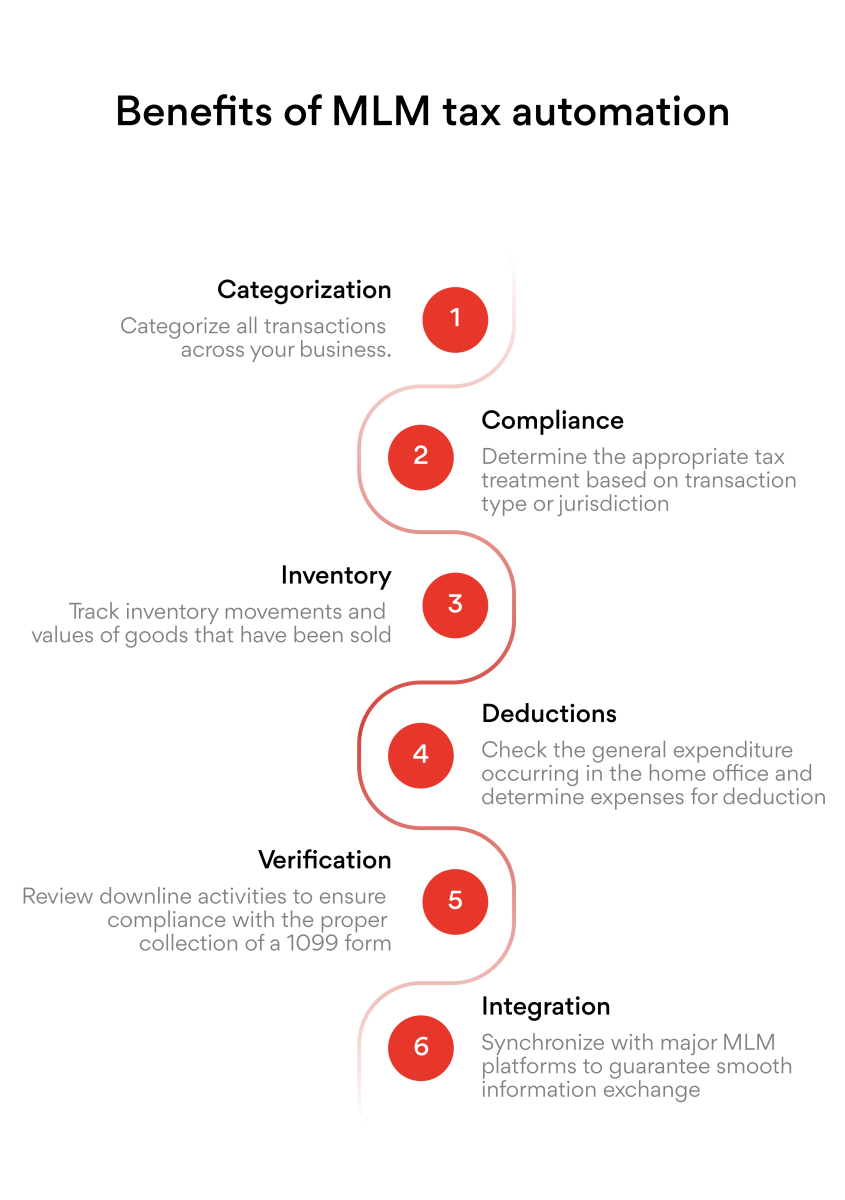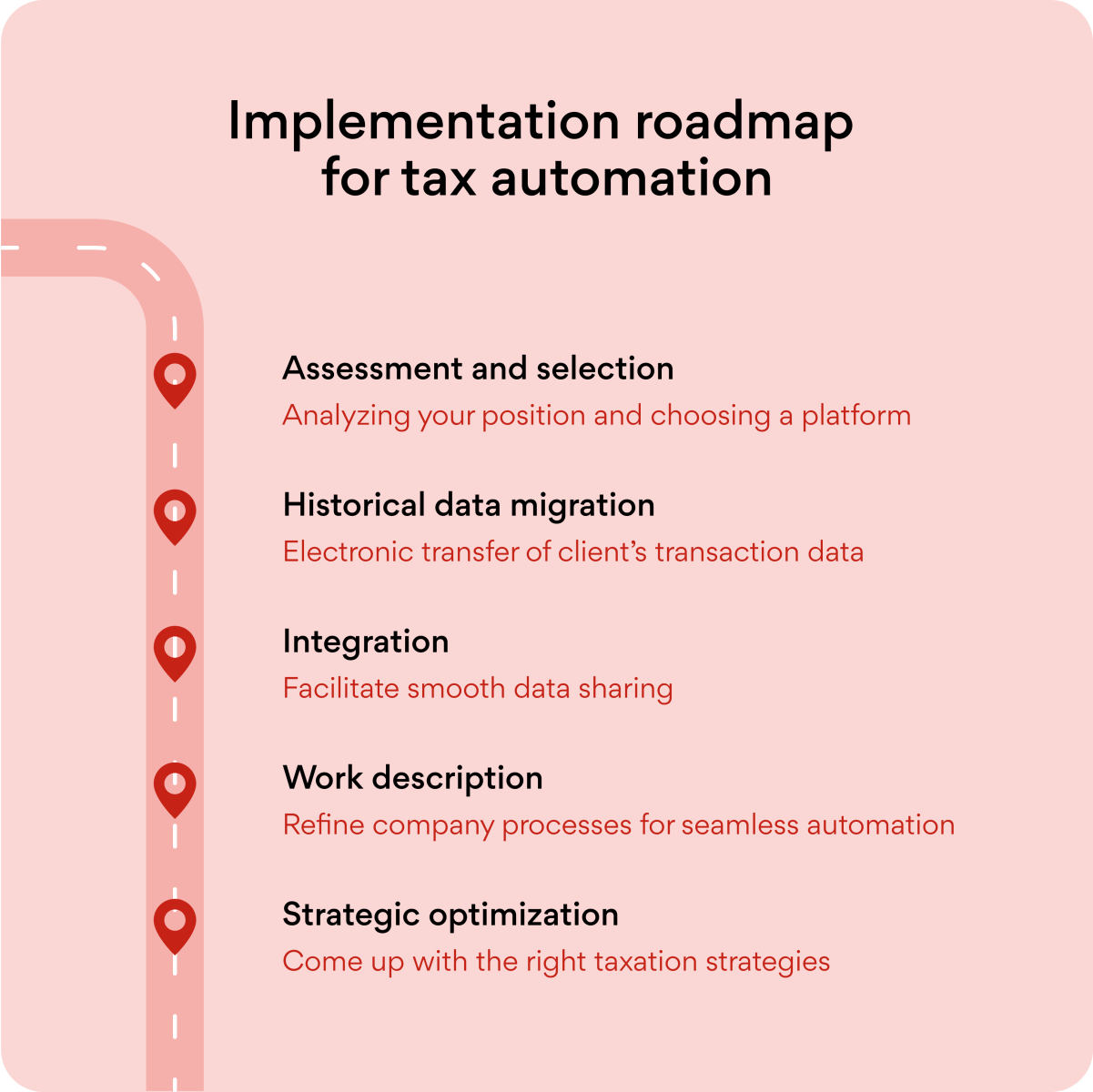The world of multi-level marketing is advancing really fast. And it is not enough to simply offer great products and organize powerful teams. Yes, we are talking about taxes. Let’s face it, managing them is often nothing less than a nightmare. They can consume a lot of your time, strength and even serenity. However, with tax automation, it will now be possible for distributors to return to what is most important for them. Tax automation is not only luxury but the ultimate strategy.
Tax automation minimizes the chances of making mistakes and saves time that can be spent on more productive activities. These intelligent solutions are assisting MLM professionals in giving accurate and optimistic outcomes with ease.
The tax challenge in MLM businesses
In the field of multi-level marketing, distributors have unique tax issues that ordinary businessmen are not likely to encounter. The structure of their business is of a multi-level ownership, being active in various jurisdictions, engaged in various types of transactions and yielding different types of revenues. These include direct sale revenue, participants revenue, bonuses and incentives, etc. As a result, the tax system gets exceptionally complicated to deal with.
However, what many distributors don’t understand is that this can be a strategic advantage. Distributors who manage to target tax automation have many advantages, including increased productivity and minimized legal exposure in addition to clearer accounts.
The drawback of traditional tax approaches
Traditional MLM tax practices, such as keeping receipts in shoe boxes, using excel files and relying on annual accounting checkups are ineffective in the present-day environment. Currently, even the IRS and state authorities use data analytics to search for several inconsistencies in the tax returns; therefore, such manual systems are risky.
Even more importantly, these traditional approaches expose the company to the high risks of noncompliance. They can also bar its management and shareholders from employing legal tax optimization techniques that could significantly enhance after-tax income. Depending only on snapshots, you are again moving in the dark, not really knowing your tax position in real time.
The transformation through automation
One of the main advantages of automation is that it does not consider taxes as an annual event but integrates tax in your day-to-day operations.
Some of the new age technological solutions for MLM-specific taxation can perform the following.

This transition from the reactive approach to proactive tax management ensures that you make all your decisions to enhance your tax status all the year round, not necessarily halfway through the year.
Strategic implementation methods
Modern MLM leaders are not restricted to using tax automation simply to avoid penalties. They can also use it to obtain competitive benefits.
Jurisdictional optimization
The calculation of multi-state tax can be automated to help the distributors in the correct planning of venturing into other states. This way, you are able to coordinate your growth with the taxation laws so as to maximize the potential profits.
Some automation platforms contain analytics on how the tax rate changes with expansion, depending on which location you are in; this makes it easy to estimate the returns on your expansion on an after-tax value.
Inventory tax strategy
Inventory is a major asset in the MLM business model, which is also a taxable element calculated in the distributor’s net income. Senior automation tools can provide details on inventory age, provide advice on setting the reorder based on taxes, and pinpoint year-end accessibility of inventory. It also provides various insights to manage the inventory with regards to the sales and taxes.
Relationship structure optimization
The manner that you have built your distributor relationship is in fact full of implications when it comes to tax. The present-day automation systems can study the arrangement of your teams and pinpoint the possible ways to streamline how commissions work within the organization.
Such tools and simulations enable you to adapt various settings of your team. This also helps determine which organizational structure will bring you the highest after-tax income and encourage your downline at the same time.
How to choose the right technological solution
Today, it is possible to see that MLM tax automation is rather developed, and there are many different solutions available at rather different prices and functionality levels. Here are things to consider while you make the choice.
Integration capabilities
When implemented well, the tax automation applies within the MLM company’s compensation plan, banking or payment processing tools, and customer relationship management. This integration saves a lot of time for data entry and guarantees the coherency of financial data processes.
Current leaders provide open APIs, which empowers users to integrate them with most business applications, forming a very efficient and closely-knit financial ecosystem that minimizes the bureaucracy.
Machine learning tax classification
Most of the new systems are equipped with machine learning techniques that make the classification of the transactions better with every passing day. These systems have been built from business patterns and taxonomy, which tax professionals use to get more accurate categories as time goes on.
If by any chance the MLM business is involved in producing a large number of documents with many legs and complex compensation structures, then the document review process will become incredibly burdensome. However, with the help of automation, even such a company will be able to keep up with the requirements while avoiding extensive work-related stress.
Mobile documentation capture
Mobile enabled distributions enhance the performance of field oriented MLM distribution by making real time expenses easier. These systems involve OCR as well as AI that helps to identify required tax data on receipts and sort business expenses.
Moreover, this capability turns the preparation of tax documents into a painless and efficient process that means you do not overlook important details.
Implementation roadmap
In order to achieve success in automating taxes, there is some fundamental approach that should be followed. Consider this phased implementation strategy:

Assessment and selection
Analyze your current position in the utility of tax and determine areas of concern. Then, choose a platform that will be appropriate for use.
Historical data migration
Electronic transfer of client’s transaction data to better understand current tax positions, as well as to identify potential changes to returns.
Integration
Establish interfaces between the technology you have in the area of tax and others to facilitate data sharing.
Work description
Refine the processes of the company and create new ones that would make proper use of automation, while still having necessary control over the process.
Strategic optimization
Liaise with experts in taxes in order to come up with the right taxation strategies facilitated by your new vantage point.
Each of these phases is dependent on the previous phase and leads to a specific scheme of managing taxes more effectively.
The future of MLM tax management
In the following years, several factors will influence how MLM distributors ought to deal with taxes.
Blockchain-based compliance
Tax reporting will be revolutionized by blockchain technology, creating accurate and unalterable records that can be used by the authorities. Modern MLM structures have already thought about a commission and inventory system that shall be based on blockchain technology, which will significantly help reduce tax complexities.
Predictive tax planning
Taxations of the next generation will not only focus on reporting and analytics but can also predict and provide suggestions as well. These systems will check your business activities and advise when to make purchases or sell your products, and when it is most suitable to hire additional staff.
Integrated financial optimization
Many people cannot differentiate between tax planning and general business financial planning. Future platforms will include tax implications side by side with personal retirement planning, cost of healthcare, and business succession in the best possible manner for your benefit.
Discover how we build resilient businesses with advanced MLM functionalities
What can be your next step?
In order to stay ahead, here is how you should proceed with achieving the automation of taxes.
Evaluate your current structure of taxation and determine key areas of problems.
A specific focus on finding research and development platforms that is appropriate for MLM business models.
It is recommended to consult with tax consultants who are conversant with the MLM industry.
Continued education concerning various possible tax strategies made possible by automation.
It will greatly benefit the MLM distributors who implement tax automation systems to advance over their competitors. Changing the management of taxes from a compliance issue to an important business asset allows you to orient yourself for further developments.
The new modern tax platforms offer high visibility, productivity and insightful planning strategy that any MLM business-minded people cannot afford to let go. In fact, it’s not only about avoiding risks but also about having possibilities.







![How marketing automation is empowering success for direct selling companies [Backed by stats]](https://assets.epixelmlmsoftware.com/sites/default/files/blogs/recent-blogs/marketing-automation-direct-selling.png)

Leave your comment
Fill up and remark your valuable comment.